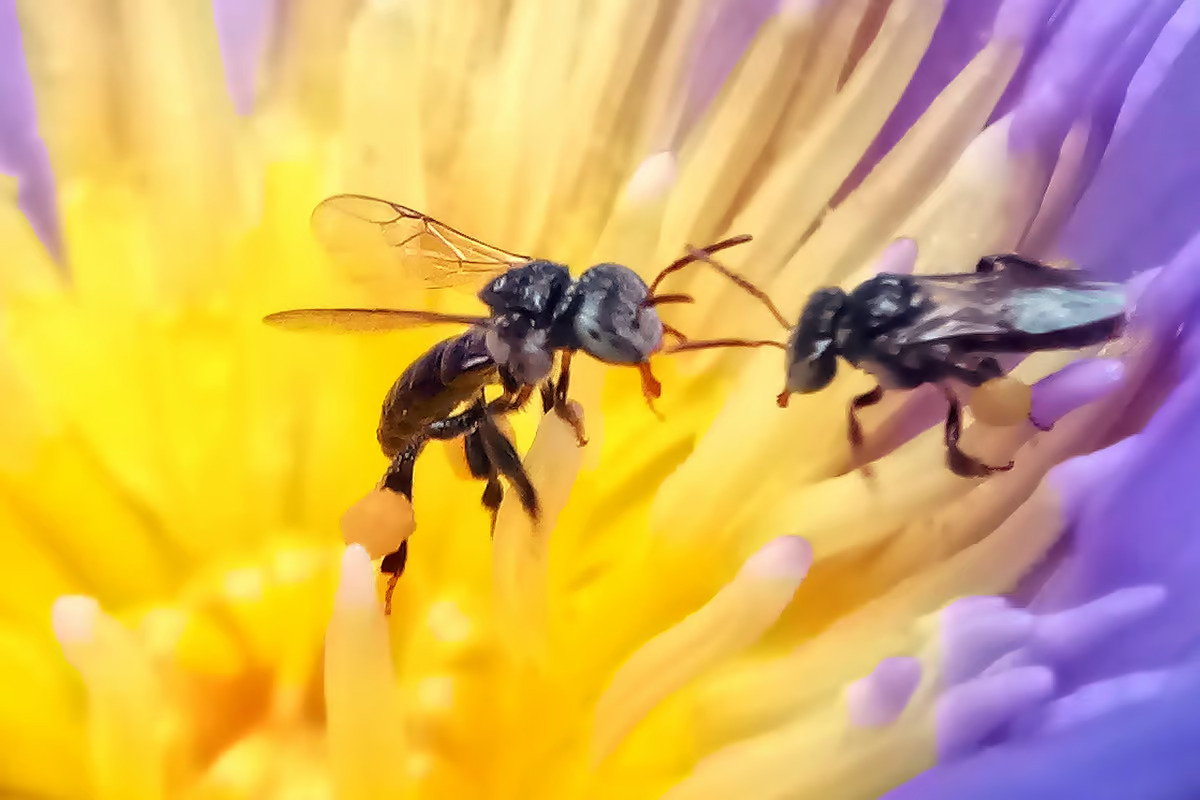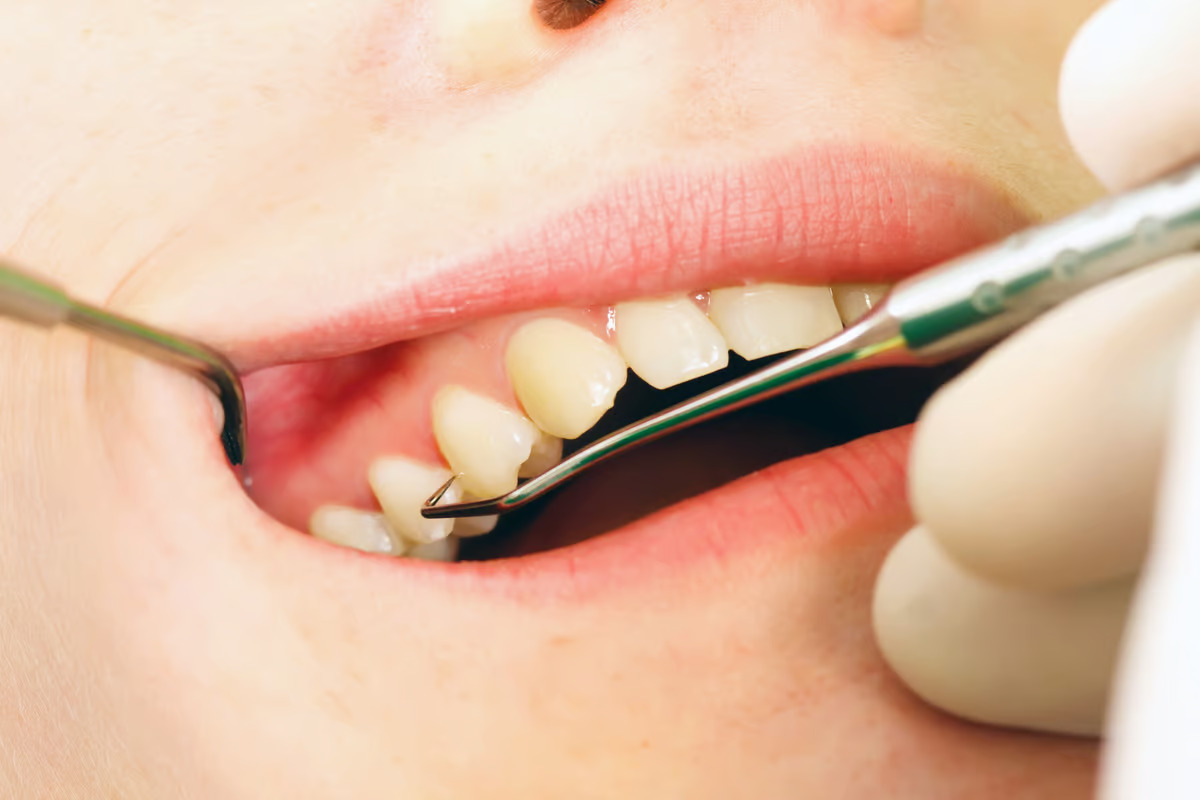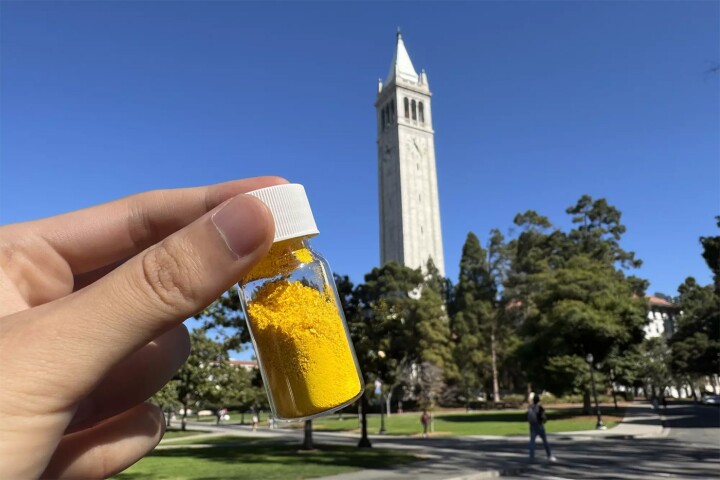 The sugar found in stingless bee honey has a raft of health benefits. DianitaKartika/Wikimedia Commons CC BY-SA 4.0 –
The sugar found in stingless bee honey has a raft of health benefits. DianitaKartika/Wikimedia Commons CC BY-SA 4.0 –
With over 600 species, stingless honey bees are the largest group of honey-producing bees; they’re found throughout tropical and subtropical parts of the world. Unlike honey bees, which store their honey in a wax honeycomb, stingless bees store theirs in pots of wax mixed with tree resins.
Stingless bee honey has a distinctive, sour taste compared to honey from the honey bee. When researchers from the University of Queensland (UQ) led a study into stingless bee honey, they discovered that its taste wasn’t the only thing about it that was unique – it contains a rare sugar that makes it healthier.
“We had a visiting researcher from Malaysia, Norhasnida Zawawi, who was interested in analyzing the sugars in stingless bee honey,” said Dr Natasha Hungerford, a senior research fellow and organist chemist at UQ, and the study’s lead and corresponding author. “When we characterized the sugars the honey contained, we got a surprise – we found a large amount of a disaccharide that didn’t match any of the usual standards for sugars in food.”
A disaccharide is a sugar consisting of two monosaccharides (the simplest form of sugar) linked together. The researchers’ surprising disaccharide was trehalulose, which is made up of a molecule of fructose bound to a molecule of glucose. Across five different stingless bee species from Neotropical and Indo-Australian regions, the researchers, for the first time, identified trehalulose as a major component, representing between 13 and 44 grams per 100 grams of each of these species’ honey.
“It’s an exciting finding, because this sugar is not the major component of any other food,” Hungerford said.
The previously unknown high levels of trehalulose in stingless bee honey contribute to its reported health effects, the researchers say. Although it’s structurally similar to sucrose (table sugar), the unusual bond between glucose and fructose in trehalulose is more stable than that found in sucrose. This means that trehalulose will break down more slowly in the small intestine, giving it a lower glycemic index, or GI. So, it’ll produce a steady rise in blood glucose instead of a spike.

The low GI value of trehalulose makes it potentially useful in managing type 2 diabetes, improving blood glucose control and insulin sensitivity. It could also be useful for prediabetics and people who are trying to lose weight. The slow-rising blood glucose levels caused by low-GI foods help increase levels of the hormone leptin, which helps reduce food consumption at mealtimes.
A 2023 study reviewed the (limited) existing research into the potential health benefits of trehalulose. In addition to the already mentioned benefits of being low-GI, compared to sucrose, trehalulose was less likely to cause tooth decay because it doesn’t feed the sugar-driven oral bacteria responsible for cavities. It was also found to be 60% to 70% as sweet as sucrose and highly soluble in water, so it could be used in food products like jams and jellies.
Its unique sugar composition meant that stingless bee honey didn’t fit the international food standard definition of ‘honey.’ So, it couldn’t be officially sold as honey in many regions of the world, including Australia.
“Following our work, the Australian Native Bee Association applied to Food Standards Australia and New Zealand to modify the standard to include stingless bee honey,” Hungerford said.
On the 22nd of July 2024, the food standards authority gave its approval, meaning that it’s now legal to sell and buy native stingless bee honey in Australia. It’s hoped that the honey will increasingly be adopted as a healthy sugar source.
Beyond that, the researchers are exploring ways of getting the bees to make more trehalulose.
“We are now working, with funding from Sugar Research Australia, to identify any genes and enzymes that the bee uses to produce trehalulose,” said Hungerford. “Hopefully, that discovery could inspire a way to manufacture pure trehalulose, which could be used in many products as a low GI sweetener. That’s the long-term goal.”
The study was published in the journal Scientific Reports.
Sources: Nature, University of Queensland
–
























